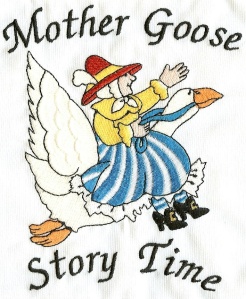literacy
Literacy and Play
A year or so ago, I made a Prezi about literacy and play in the classroom. I tried with all my might to get the Prezi to embed on my blog, but it was not having it. I pulled out one my favorite part of the Prezi which was 5 integrations into dramatic play that can enhance literacy. If you’d like to see the entire Prezi you can go to: https://prezi.com/0jbujiguhnme/play-and-literacy/.
Sock Puppets:
Using sock puppets in the classroom “provides a meaningful way for students to engage in reading, which ultimately results in increased fluency” (Peck, 2006, p. 793). Additionally having students make the sock puppets before they are placed in dramatic play is great art project that promotes fine motor and creative skills. You’d be amazed with the stories young students will tell with sock puppets on their hands! (Also, there is an app on the iPad called Sock Puppets where students can make their own puppets, create a scenario and voices for them and record their ‘play’ to watch later. Check it out!)

Writing Materials
Adding pens and paper into the dramatic play area will encourage children to interact with print uniquely as adults do (Bennett-Armistead, V. 2013). Teachers could even encourage students to use the writing materials to create scrips for their sock puppets, make signs for a performance, write a take out menu, create a grocery list, etc. etc. etc. There is no end to how students can use writing materials in dramatic play.
Complex Play
Dramatic play is an ideal environment for young students to do a lot of problem solving, develop literacy, and practice social skills. Dramatic play encourages students to engage in more complex and higher quality play which will develop their oral language skills by assigning roles, deciding the scenario, discussing the progs, etc. (Copple, 2009, p. 146).
Nursery Rhymes & Riddles
Nursery rhymes and riddles introduce the use of rhyme and rhythm before the concept is explicitly taught. They also help ESL (English as a second language) students learn their new language through rhyming and repetition (Magee, 2012, p. 29).
Writing Notes
Encourage students to write notes to one another, parents, siblings, imaginary friends, etc. This exercise is important to the development of spelling, phonological and phonemic awareness (Access Center, 2007). This is also a unique writing experience students can engage in. The more unique writing experiences students have, the more incentive they will have to continue writing. Having different types of writing utensils (such as pencils, pens, markers, crayons, paint, etc.) make writing more fun and enjoyable for students; young students especially should not be limited to just using a pencil when they write.
- Access Center (2007). Literacy-rich environments. Retrieved from http://www.readingrockets.org/article/21825/
- Bennett-Armistead, V. (2013). What is dramatic play and how does it support literacy development in preschool. Retrieved from http://www.scholastic.com/teachers/article/what-dramatic-play-and-how-does-it-support-literacy-development-preschool
- Copple, C. & Bredekamp S. (Eds.). (2009). Developmentally appropriate practice in
early childhood programs serving children from birth through age 8 (3rd edition). Washington, DC: National Association for the Education of Young Children. - Mcgee, L. & Richgels, D. (2012). Literacy’s beginnings: Supporting young readers and
writers. Boston, MA: Pearson Education, Inc. - Peck, S. & Virkler, A. (2006). Reading in the shadows: Extending literacy skills through
shadow puppet theater. Reading Teacher, V59, p. 786-795. http://ehis.ebscohost.com/ehost/detail?vid=5&sid=3fa331bb-47a7-4b8f-a5b9-2dbf9689ec2c%40sessionmgr111&hid=7&bdata=JnNpdGU9ZWhvc3QtbGl2ZQ%3d

